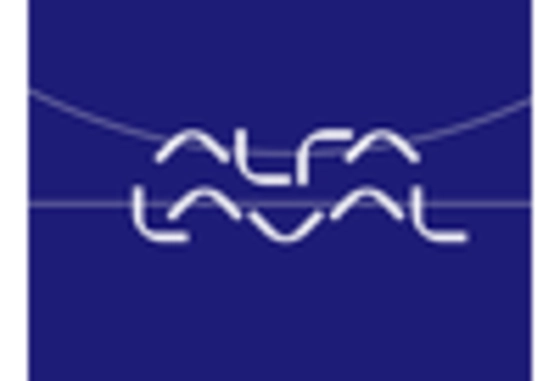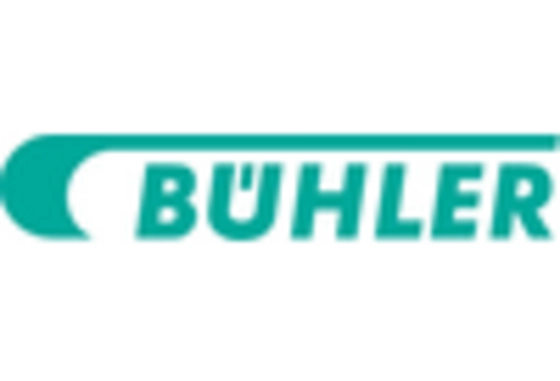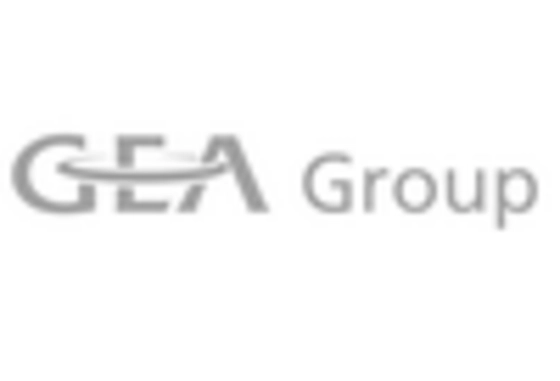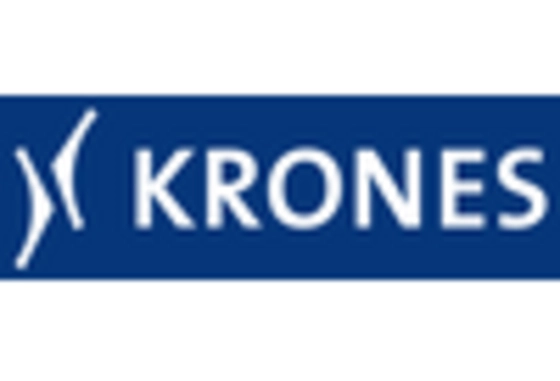The Milk Homogenizer Machine Market is currently characterized by a dynamic competitive landscape, driven by increasing demand for high-quality dairy products and technological advancements. Key players such as GEA Group (DE), SPX Flow (US), and Tetra Pak (SE) are at the forefront, each adopting distinct strategies to enhance their market positioning. GEA Group (DE) focuses on innovation and sustainability, emphasizing energy-efficient solutions that align with global environmental standards. SPX Flow (US) appears to be concentrating on regional expansion, particularly in emerging markets, to capitalize on the growing dairy sector. Tetra Pak (SE) is leveraging digital transformation, integrating smart technologies into their homogenization processes, which enhances operational efficiency and product quality. Collectively, these strategies contribute to a competitive environment that is increasingly centered around technological advancement and sustainability.
In terms of business tactics, companies are localizing manufacturing to reduce costs and optimize supply chains, which is particularly relevant in the context of fluctuating global trade dynamics. The Milk Homogenizer Machine Market is moderately fragmented, with several key players exerting influence over their respective regions. This fragmentation allows for a diverse range of products and innovations, although it also intensifies competition among established and emerging firms.
In August 2025, GEA Group (DE) announced the launch of a new line of energy-efficient homogenizers designed to reduce energy consumption by up to 30%. This strategic move not only reinforces GEA's commitment to sustainability but also positions the company as a leader in energy-efficient dairy processing solutions. The introduction of these products is likely to attract environmentally conscious customers and enhance GEA's competitive edge in the market.
In September 2025, SPX Flow (US) expanded its operations in Southeast Asia by establishing a new manufacturing facility in Vietnam. This expansion is indicative of SPX Flow's strategy to tap into the rapidly growing dairy market in the region, which is expected to see increased demand for advanced homogenization technologies. By localizing production, SPX Flow aims to improve supply chain efficiency and reduce lead times, thereby enhancing customer satisfaction.
In July 2025, Tetra Pak (SE) unveiled a new digital platform that integrates AI and IoT technologies into its homogenization processes. This platform allows for real-time monitoring and optimization of production parameters, which can significantly improve product consistency and quality. The strategic importance of this development lies in Tetra Pak's ability to offer customers enhanced operational insights, thereby fostering long-term partnerships and customer loyalty.
As of October 2025, the Milk Homogenizer Machine Market is witnessing trends such as digitalization, sustainability, and AI integration, which are reshaping competitive dynamics. Strategic alliances among key players are becoming increasingly common, as companies seek to leverage complementary strengths to enhance their market offerings. Looking ahead, competitive differentiation is likely to evolve from traditional price-based competition towards a focus on innovation, technological advancements, and supply chain reliability, reflecting the industry's shift towards more sustainable and efficient practices.


















Leave a Comment